
» Home Page » Conference Posters
|
Conference Posters: | |
|
9. |
Abstract: With an orbital period as short as 26 hours, the transiting giant planet WASP-12 b belongs to a group of planets on the tightest orbits. We detected the apparent shortening of its orbital period that could be caused by orbital decay or apsidal precession due to tidal interactions. The reanalysis of available data allowed us to identify an alternative scenario that explains the departure of transit timing from a linear ephemeris. We have found a solution with an additional planet from a Neptune-mass regime and an orbital period of 3 days. Numerical simulations show that this planet can perturb the orbital motion of WASP-12 b that manifests as the apparent orbital decay. The proposed planet is likely to transit the host star. This finding rises an opportunity to confirm the existence of the planet via the transit method. |
|
8. |
Abstract: Fotometryczne obserwacje tranzytów egzoplanet wraz z precyzyjnymi pomiarami prędkości radialnych gwiazd centralnych pozwalają na wyznaczenie pełnego zestawu parametrów fizycznych odległych światów. Fakt ten jest niezwykle istotny w astronomii egzoplanetarnej. Możliwe staje się wyznaczenie rzeczywistej masy i promienia egzoplanet, co dalej ma istotny wpływ na naszą wiedzę na temat ich budowy wewnętrznej... Ta gałąź astronomii jest stosunkowo młoda - pierwszy tranzyt egzoplanety zaobserwowano nieco ponad 10 lat temu... |
|
7. |
Abstract: The exoplanet WASP-12 b is one of the most intensely irradiated planets. Some preliminary signs of transit timing variation have been detected that makes WASP-12 b an attractive target for follow-up observations. We present light curves of complete transits observed by us with the $>$1-m telescopes in the 2010/2011 observational season. We show that new mid-transit times seem to confirm a departure from a linear ephemeris. |
|
6. |
Abstract: Transiting exoplanets are of great importance for the astrophysics of extrasolar planetary systems. High-precision photometric follow-ups allow to refine planetary and stellar parameters. Such observations may also lead to discoveries of additional bodies if transit time variations are detected. Effects of dark spots on a surface of a host star and signs of non-strictly periodic transits are illustrated by sub-millimagnitude-precision transit light curves obtained for WASP-10 b and WASP-12 b. |
|
5. |
Abstract: Photometric follow-ups of transiting exoplanets (TEPs) may lead to discoveries of additional, less massive bodies in extrasolar systems. This is possible by detecting and then analysing variations in transit timing of transiting exoplanets (TTV). In 2009 we launched an international observing campaign which aim is to detect and characterise TTV signals in selected transiting exoplanets. The programme is realised by collecting data from 0.62.2-m telescopes spread worldwide at different longitudes. We present our observing strategy and summarise first results... |
|
4. |
Abstract: Transiting exoplanets (TEPs) observed just a few Myrs after formation of their host systems may serve as the Rosetta Stone for planet formation theories. They would give strong constraints on several aspects of planet formation, e.g. time-scales (planet formation would then be possible within 10 Myrs), the radius of the planet could indicate whether planets form by gravitational collapse (being larger when young) or accretion growth (being smaller when young). We present a survey which main goal is to find and then characterise TEPs in very young open clusters. |
|
3. |
Abstract: First results of the exotransit timing survey at the Torun Centre for Astronomy are presented. The accuracy of determining the midtransit moment, transit's duration and depth are discussed in a context of utilising a 60-cm class telescope. |
|
2. |
Abstract: Od września 2002 roku w Obserwatorium Astronomicznym Uniwersytetu Mikołaja Kopernika realizowany jest projekt badawczy Semi-Automatic Variability Search (SAVS, Pół-automatyczne Poszukiwanie Zmienności), którego celem jest odkrywanie gwiazd zmiennych w wybranych obszarach nieba północnego. Program ten kierowany jest przez dr. Andrzeja Niedzielskiego i został zainicjowany przez wybitnego polskiego uczonego - prof. Bohdana Paczyńskiego. W pracy przedstawiamy najnowsze wyniki oraz kierunki dalszego rozwoju projektu. |
|
1. |
Abstract: In this poster we present a short description of a new observational project called Semi-Automatic Variability Search (SAVS). SAVS is a photometric CCD sky survey aimed at discovering of new variable stars in the northern hemisphere. It is located at the Astronomical Observatory of the Mikołaj Kopernik University in Piwnice near Toruń, Poland. The survey started in spring of 2002 with a two-month test run. Since July 2002 observations have been made systematically. |
Last modified: 2018 Aug. 29
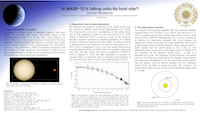 Is WASP-12 b falling onto its host star?
Is WASP-12 b falling onto its host star? 450 KB
450 KB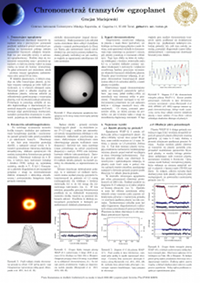
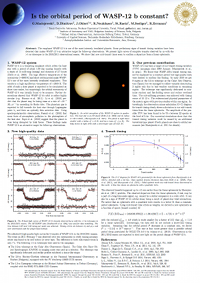 Is the orbital period of WASP-12 b constant?
Is the orbital period of WASP-12 b constant?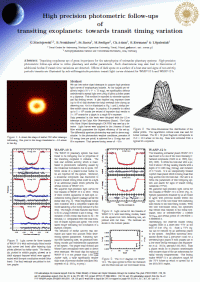 High precision photometric follow-ups of transiting exoplanets: towards transit timing variation
High precision photometric follow-ups of transiting exoplanets: towards transit timing variation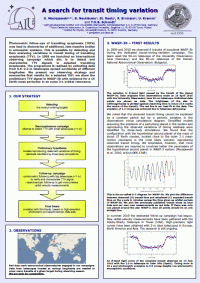 A search for transit timing variation
A search for transit timing variation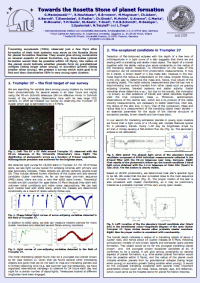 Towards the Rosetta Stone of planet formation
Towards the Rosetta Stone of planet formation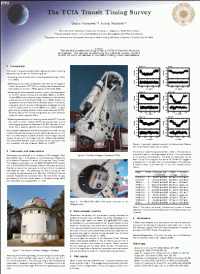 The TCfA Transit Timing Survey
The TCfA Transit Timing Survey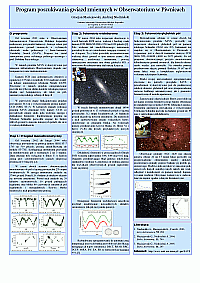
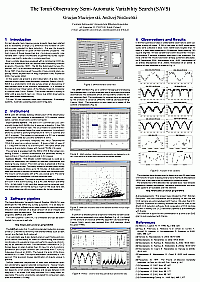 The Toruń Observatory Semi-Automatic Variability Search (SAVS)
The Toruń Observatory Semi-Automatic Variability Search (SAVS)